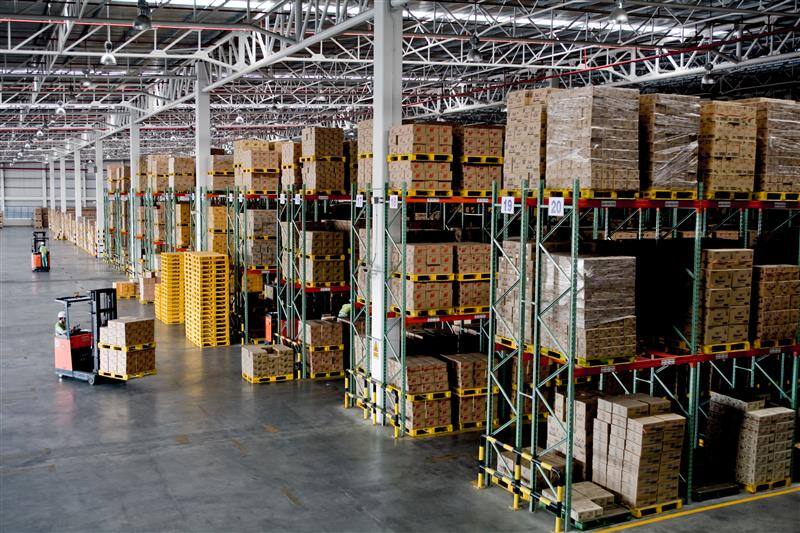This article is part of the ScaleWorks series, which explores how warehouses can grow by tightening up processes, adopting scalable technology and building repeatable habits.
If you’re new to the series, it’s worth reading our Standardisation guide to see how consistent processes give data its meaning, and our Leadership guide for ideas on turning numbers into action.
Today, the principle here is simple: whether you run a multi-client 3PL or a single-site business warehouse with growth ambitions, you can only improve what you measure.
Why Continuous Improvement Needs Reliable Shared Data
Warehouses generate an ocean of information, but raw numbers mean little unless they are timely, accurate and shared. A late or inconsistent report leaves teams working from different realities. Continuous improvement requires everyone – operatives, managers and clients – to be aligned on the same picture.
When order accuracy drops or dwell time spikes, people should see it at once, not three weeks later in a retrospective spreadsheet. A WMS that records events in real time makes this possible. Barcode scans, put-away confirmations and shipment releases all become automatic data points. And, rather than adding more admin, it just captures the work as it happens.
Here’s how to achieve that.
Define the Four KPIs Everyone Understands
Start by locking in four core measures:
- Order accuracy tells you how many orders left your building without error. If the number slips, it directly affects customer satisfaction and cost.
- Pick rate shows how efficiently your operatives are moving product. It is easy to measure and exposes the impact of slotting, training or technology changes.
- Dwell time looks at where goods get stuck, whether that is pallets waiting at goods-in or orders queued at the pack bench.
- Returns rate closes the loop by showing how much product comes back, and why. Each definition must be written down with a formula, so when you present to a client or compare across shifts, the meaning never drifts.
Instrument the Operation so the Numbers Capture Themselves
Measurement shouldn’t depend on clipboards or manual counts.
If a pallet is received, a scan event can create a timestamp. If an order line is picked, a voice or handheld confirmation can log both accuracy and speed.
When data is tied to the workflow, the result is automatic reporting. This reduces the temptation to massage figures and removes delay. In other words, the more you close gaps in the process, the more your reporting reflects the reality of the floor rather than estimates. It also frees supervisors to coach and improve, not just count and reconcile.
Use WMS Reporting as a Concrete Example
Any WMS worth its salt includes reporting tools that allow users to filter performance data, export it to Excel or CSV, and schedule delivery to stakeholders. For a warehouse manager, this means you can automate a weekly report on order accuracy and pick rate without lifting a finger.
If your WMS is cloud-based, managers can also log in at any time to see current performance. Instead of manually compiling KPIs for each review meeting, you then have a system that does the legwork.
Run Practical Experiments that Demonstrate Value Quickly
There’s no magic process to follow when experimenting. What’s important is experimenting often and measuring the results against your baseline data.
For example:
- If order accuracy dips, introduce barcode verification at pack for a family of look-alike SKUs and measure whether the error rate falls.
- If pick rates lag in a zone, re-slot the top twenty SKUs closer to despatch and track the impact.
- If dwell time is long at goods-in, run a pilot with a target to put away receipts within two hours and watch how many breaches occur.
- If returns are high for damaged items, introduce a packaging quality check and compare results week over week.
These small, focused trials are examples of transforming your abstract data into concrete improvement, but they’re not appropriate for every organisation. Look to find your own practical experiments based on your own data.
How to Start Today with Minster Edge Core
Warehouses already running Minster Edge Core can begin by setting up a weekly scheduled report that covers order accuracy, pick rate by zone, average dwell time and returns by reason. That’s because Minster Edge Core offers those functions in a package designed for growing warehouses that need transparency without excess complexity.
For those not yet on Minster, the same logic applies – ensure your WMS can export, schedule and share reports as a minimum. Without those capabilities, continuous improvement becomes much harder to sustain.
Ready to put continuous improvement on autopilot?
Discover how Minster Edge Core makes KPI tracking and client transparency part of your everyday workflow.



